Calcarious Concretions ( Septarian Nodules)
|
Calcarious concretions are represented by lenticular nodules. These occur mainly in well defined discrete layers in which individual nodules are spaced on average at intervals of 1 to 3 metres in an horizontal plane. The nodules are usually 30 to 60 cm in diametre and 15 to 30cm in thickness. In some nodule layers layers the larger nodules are often irregularly lobate, with an 'amoeboid' outline/Vertically elongated 'spindle shaped' nodules occur occasionally and thin 2 - 3cm reddish brown tabular calcarious layers occur at some levels. |
Calcarious concretions are composed of a clay and silt matrix cemented by ferroan calcite. They do not represent 'hiatus' concretions or hardgrounds as they occur within beds rather than at bed junctionsand show no evidence of fossil concentrations, boring, or encrusting by epifauna. Ferroan calcite also forms well below the sedimentary surface. Their occurence is probably due to relatively high carbonate concentrations at specific levels. (ref:- C King 1984) |
These are also known as cement stones and between 1796 and 1907 were removed from the foreshore forming the basis for a local industry for the production of cement. (ref:- W George March 1984) |
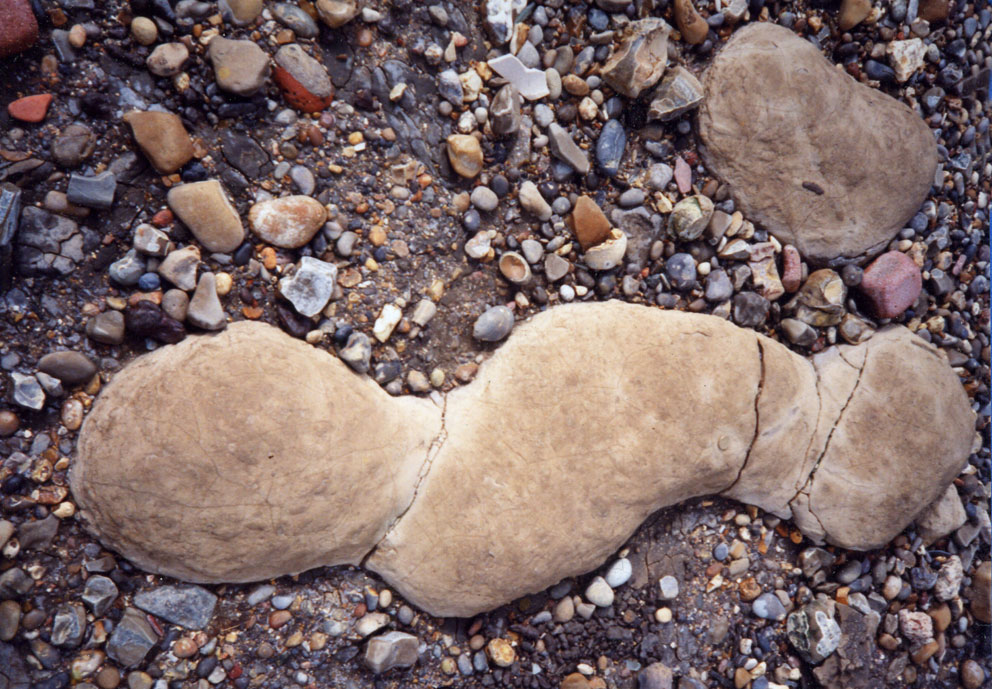 |
Irregularly shaped septarian nodule (Band B) exposed in the beach near Warden Point |
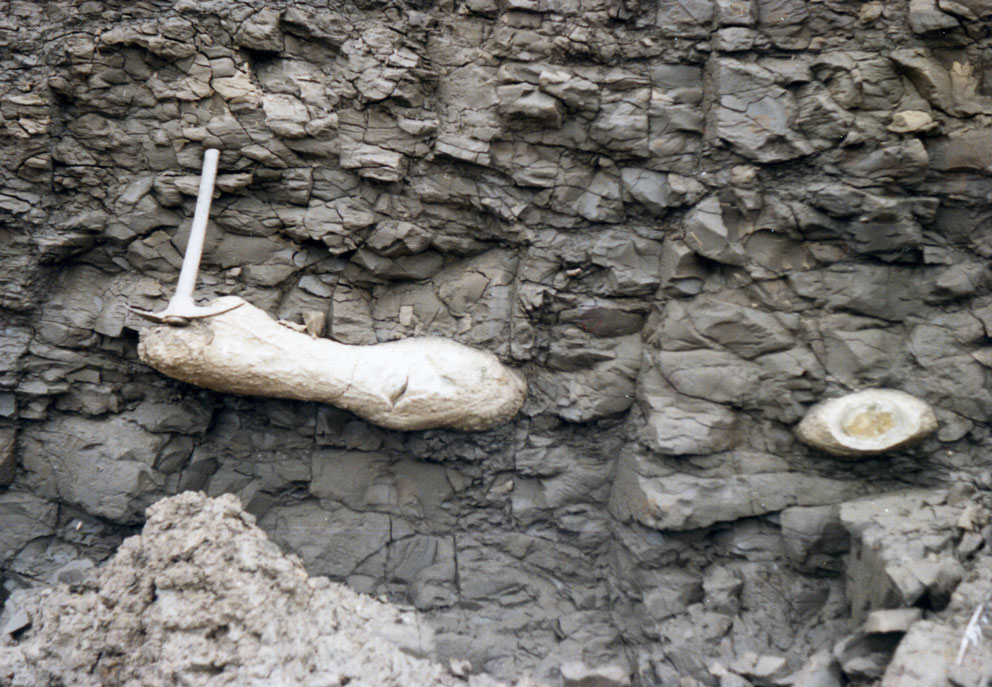 |
Amoeboid nodules (Band C) in the cliff at Warden Point |
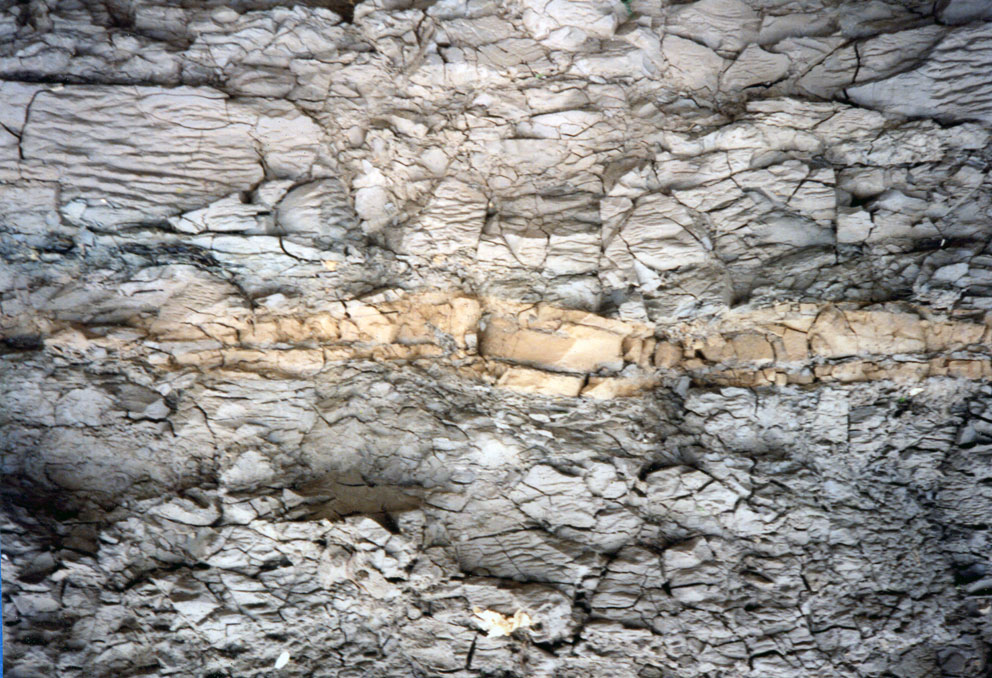 |
A lens of red-brown calcarious claystone in the cliff east of Paddys Point |
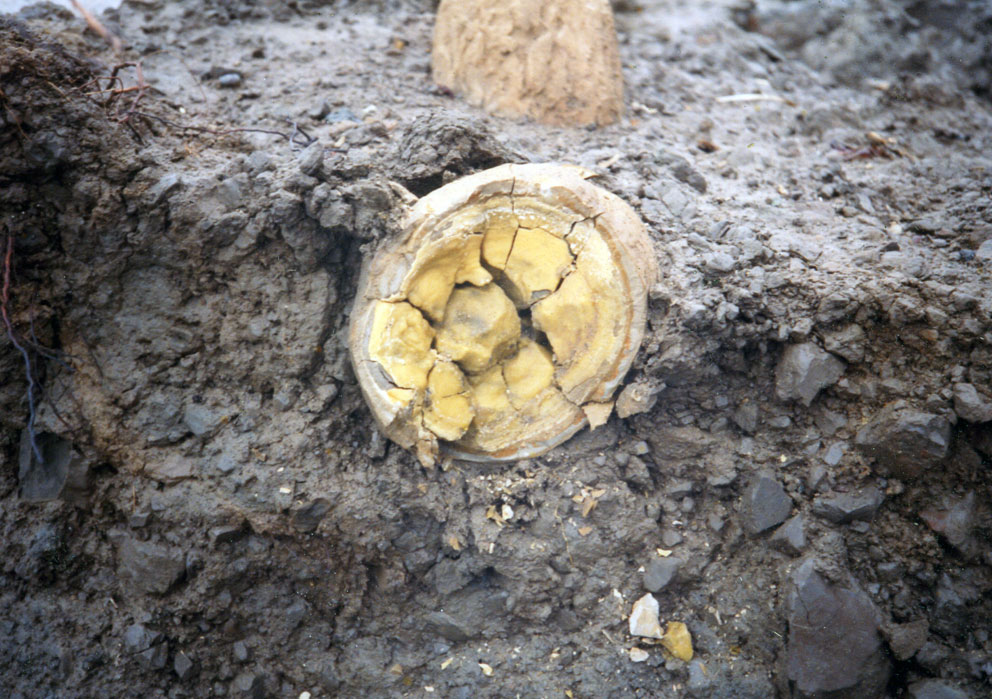 |
A Nodule broken to reveal the internal calcite 'septa'. These frequently contain baryte (roses) and iron pyrite crystals 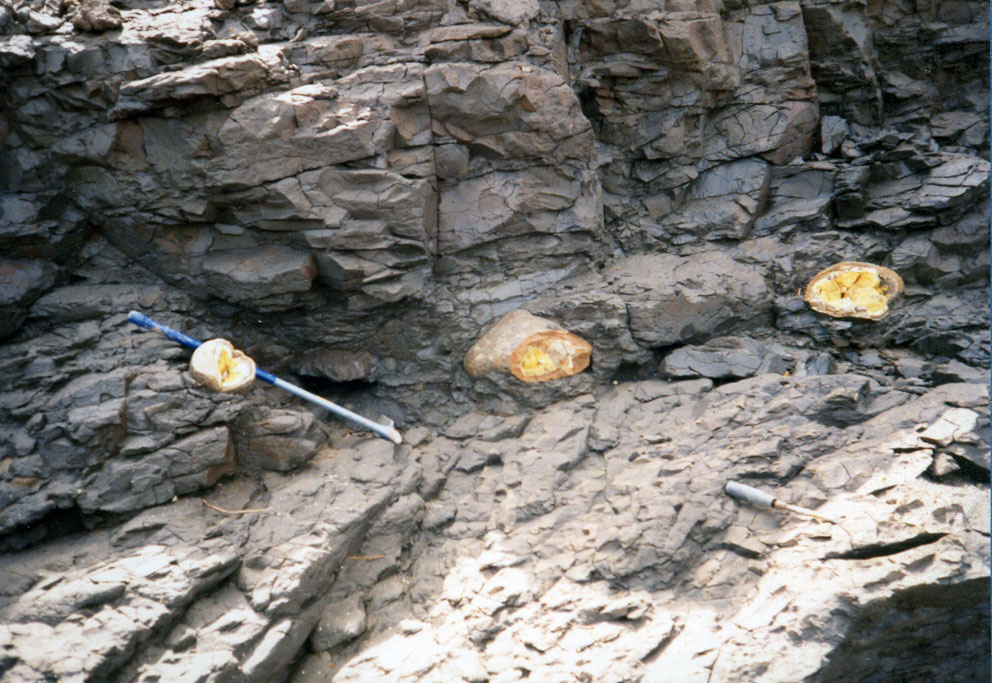 |
Nodules exposed in the base of the cliff near Paddys Point (BedI or J) |
